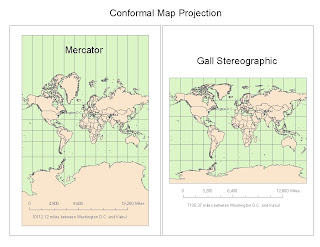Campgrounds in LA County at Risk from the
Station Fire of August/September 2009
A major fire stormed the Los Angeles County during late August and early September of 2009. The fire was considered the largest in LA County’s current history and recorded as the tenth largest in the history of California, engulfing over 160,000 acres of land and destroying nearly one hundred homes. Beginning on August 26, the fire grew rapidly without the help of strong winds, before finally being completely contained on October 16. The cost of the wildfire is estimated at around $90 million, taking the lives of two firefighters in the process, and is now believed to be a case of arson.
In accordance to the set of perimeters we have spanning from August 29thto September 2nd, the Station Fire first appeared as a concentrated, circular region stemming out from the San Gabriel Mountains. The fire initially grew both towards the east and west, before rapidly spreading northwest in a rectangular offshoot with the whole fire shaped like a rough capital “L” early on the 30th of August. From there, the fire continued to move east, more than doubling in size by the following day on the 31st. The fire kept burning and moved to the east and west during the first two days of September, turning into a rough sideways oval shape with two branches of fire pushing out further east, until finally looking almost like a lobster claw with the pincers facing east by September 2nd.
I have included a state map of California with Los Angeles County which is highlighted in yellow and the total affected area by September 2nd in bright red to show the breadth of the fire on a state-wide scale, and give a better idea of where exactly the fire and the county are located. Next to the state map is a reference map showing the spread of the fire in semi-transparent layers overlaid on top of the hillshade of the region to show how the fire grew in respect to the local topography. It appears that the fire was contained on the southernmost side by the San Gabriel Mountains, as it could not climb over the tops of the mountains. Instead the fire spread horizontally to the east and west as well as north away from band of mountains.
The thematic map above examines the campgrounds in LA County that were at risk from the Station Fire. Starting on August 29th, there were only two campgrounds in the fires grasp, the Oakwilde Trail Camp and the Switzer Camp. On the 30th, twelve more campgrounds were inside the fire’s boundary, and fourteen more on the 31st. September 1st and 2nd saw ten and eight additional campgrounds within the fire’s range, bringing the total for the five days to 46 campsites at risk. These campsites would have needed to be evacuated, as most of them were consumed and destroyed by the Station Fire. The Angeles Crest Highway (part of California State Route 2) is the biggest highway near most of the campsites in question, and would have had to been utilized for evacuation purposes before the road itself was engulfed by the fire.
The maps I have composed and included in my report provide insight into the location and spread of the Station Fire, as well as its devastating effect on the campsites of the region. In addition to the possible structural damage sustained by established campsites, the surrounding forests were incinerated and it will be years before the land recovers enough to support camping again.
Bibliography:
CNN. "Investigation under way into cause of Station fire." CNN U.S.. N.p., 1 Sept. 2009. Web. 9 June 2012. <http://articles.cnn.com/2009-09-01/us/california.wildfires_1_angeles-national-forest-fire-officials-fire-chief-mike-dietrich?_s=PM:US>.
InciWeb. "InciWeb the Incident Information System: Station Fire News Release." InciWeb the Incident Information System: Current Incidents. N.p., 27 Sept. 2009. Web. 9 June 2012. <http://inciweb.org/incident/article/9640/>.
InciWeb. "InciWeb the Incident Information System: Station Fire." InciWeb the Incident Information System: Current Incidents. N.p., 10 Nov. 2009. Web. 9 June 2012. <http://inciweb.org/incident/1856/>.
KTLA News. "Report: Number of Firefighters Reduced Before Station Fire."KTLA.com. N.p., 2 Oct. 2009. Web. 9 June 2012. <www.ktla.com/news/landing/ktla-angeles-fire,0,5292469.story>.
LA Times. "Station fire is largest in L.A. County's modern history." Los Angeles Times. N.p., 2 Sept. 2009. Web. 9 June 2012. <http://latimesblogs.latimes.com/lanow/2009/09/station-fire-is-largest-in-la-county-history.html>.
"Station Fire." California Department of Forestry and Fire Protection. N.p., 16 Oct. 2009. Web. 9 June 2012. <cdfdata.fire.ca.gov/incidents/incidents_details_info?incident_id=377>
















